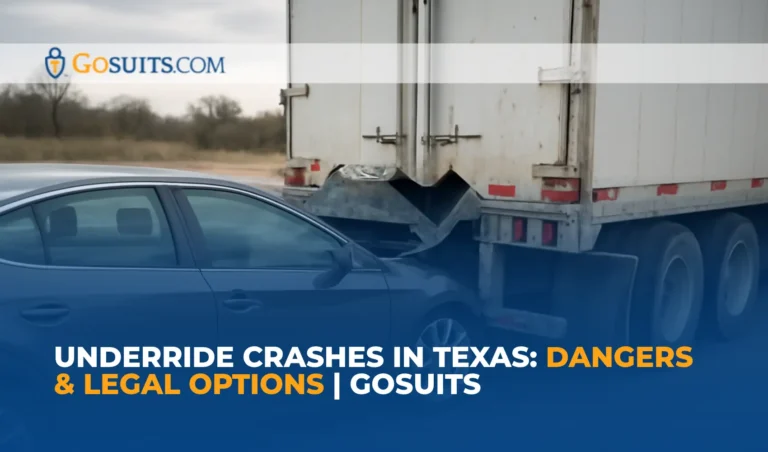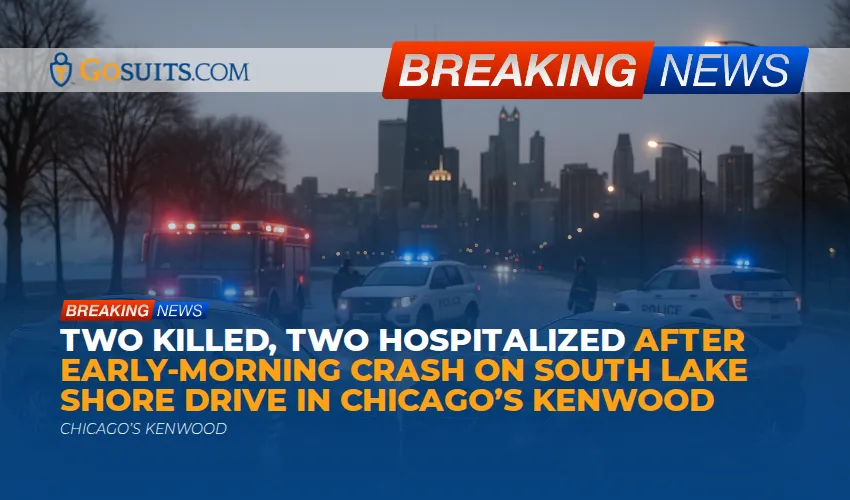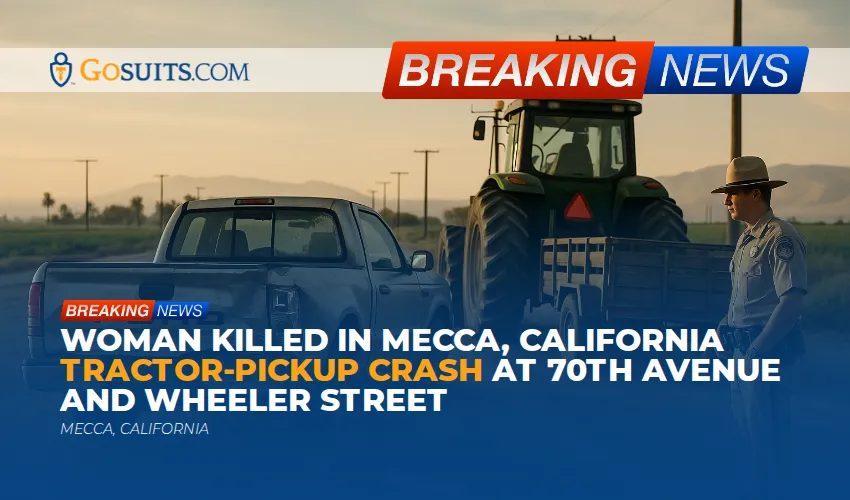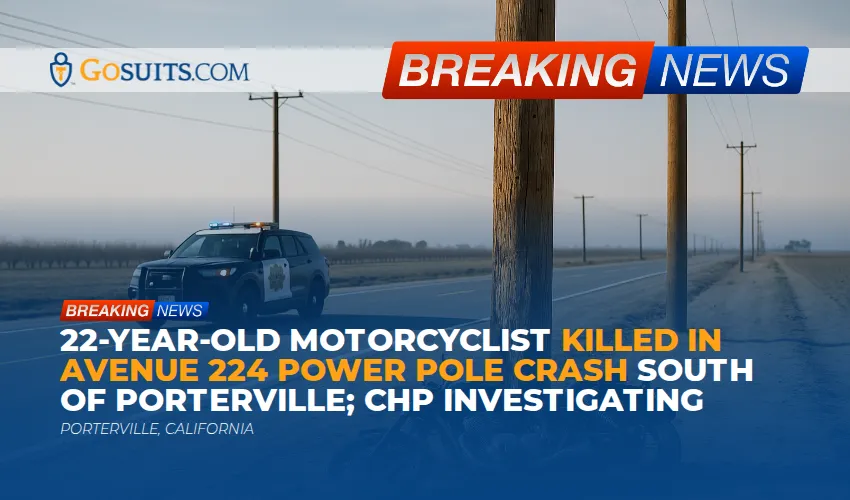- What is an underride crash in Texas?
- Why are underride crashes so dangerous for people in cars?
- What federal rules apply to rear and side underride guards?
- How common are underride crashes and what do national statistics show?
- Are Texas roads and cities at higher risk for 18‑wheeler underride crashes?
- Who can be liable in a Texas truck underride accident?
- How do you prove liability in a semi‑truck underride case in Texas civil court?
- What evidence should be preserved after a truck underride crash?
- What insurance and financial responsibility rules apply to big rigs?
- What damages can you seek in a Texas underride crash case?
- How long do you have to file a claim in Texas?
- What if a loved one was killed in a Texas underride crash?
- What if you may be partly at fault under Texas comparative negligence?
- Should an underride case be filed in Texas state court or federal court?
- What defenses do trucking companies raise in underride lawsuits?
- How do rear underride and side underride cases differ legally and technically?
- Can brokers or shippers be responsible in a Texas truck underride crash?
- What should you do after an underride crash in Texas?
- How does GoSuits help Texas underride crash victims and families?
- Where can you learn more about underride safety and Texas law?
What is an underride crash in Texas?
An underride crash happens when a smaller vehicle goes under the rear or side of a tractor‑trailer or other large truck. In a rear underride, a car strikes the back of a trailer, and the front of the car wedges beneath it. In a side underride, a car slides under the long side of the trailer, often at night or when the trailer is crossing or turning. Because a trailer’s underside is higher than a car’s crumple zones, the point of impact can be the windshield and passenger compartment, leading to catastrophic injury or fatality.
In Texas, these crashes occur on interstates and state highways that carry heavy commercial traffic through cities like Dallas, Houston, San Antonio, Austin, Fort Worth, and El Paso, as well as on rural highways used by 18‑wheelers and other big rigs.
Why are underride crashes so dangerous for people in cars?
Underride crashes are especially severe because standard passenger vehicle safety systems are designed to absorb energy in front‑end collisions at bumper height. When a car slides under a trailer, the trailer’s undercarriage bypasses many of those protections and can intrude into the passenger space. This is why underride collisions are linked to a high risk of severe head and neck trauma, spinal injuries, traumatic brain injuries, and wrongful death.
Federal safety agencies have long recognized the danger and have issued standards for rear underride guards on trailers to reduce the likelihood and severity of rear underride impacts. Side underride remains a focus of ongoing research and policy discussion at the national level.
What federal rules apply to rear and side underride guards?
What federal standards govern rear underride guards on trailers?
Rear underride guards on most trailers and semitrailers are governed by two Federal Motor Vehicle Safety Standards administered by the National Highway Traffic Safety Administration:
- FMVSS No. 223 specifies performance requirements for rear impact guards.
- FMVSS No. 224 requires most new trailers and semitrailers to be equipped with rear impact guards that meet FMVSS 223.
In 2022, NHTSA issued a final rule updating FMVSS 223 and 224 to strengthen rear underride guard performance by aligning tests with certain Canadian standards and addressing real‑world crash scenarios. You can read the final rule in the Federal Register at 87 Fed. Reg. 39155.
Are side underride guards required under federal law?
There is no current federal requirement for side underride guards on trailers in the United States. The National Transportation Safety Board has recommended side underride protection in various safety recommendations, and the U.S. Department of Transportation has created an Advisory Committee on Underride Protection to study underride issues, including side underride. See NHTSA’s page on the Advisory Committee on Underride Protection for ongoing work and meetings.
Do trucking companies have duties to maintain guards and equipment?
Motor carriers operating commercial motor vehicles must keep equipment in safe and proper condition. Federal Motor Carrier Safety Regulations require systematic inspection, repair, and maintenance of vehicles, including maintaining parts and accessories in safe operating condition. See 49 CFR Part 393 and Part 396, including 49 CFR 396.3 regarding inspection, repair, and maintenance.
How common are underride crashes, and what do national statistics show?
While underride crashes represent a smaller share of total crashes, they are disproportionately fatal. National data systems historically undercount underride because crash reports have not consistently captured underride details. The U.S. Government Accountability Office reviewed underride data and found that in 201,5 there were 219 reported fatalities in crashes involving underride of large trucks in the federal Fatality Analysis Reporting System, but the true total was likely higher due to inconsistent identification and reporting practices. The GAO recommended improved data collection and research. See the 2019 report, Truck Underride Guards: Improved Data Collection, Research, and Inspections Are Needed.
NHTSA’s crash data portal provides national crash datasets, including the Fatality Analysis Reporting System. Although underride identification is evolving, FARS remains the primary federal dataset for fatal motor vehicle crashes. See NHTSA FARS.
Are Texas roads and cities at higher risk for 18‑wheeler underride crashes?
Texas has among the highest volumes of commercial truck traffic in the nation due to its size, industrial base, border crossings, and major freight corridors such as I‑10, I‑20, I‑35, I‑37, and I‑45 passing through cities like Dallas, Houston, San Antonio, Austin, Fort Worth, and El Paso. High freight movement increases exposure to tractor‑trailer collisions, including the potential for rear underride and side underride incidents. The Texas Department of Transportation publishes annual crash statistics and reports on crashes involving commercial motor vehicles. For current data and reports, see TxDOT’s crash statistics resources at TxDOT and its crash data pages.
Who can be liable in a Texas truck underride accident?
Responsibility in a Texas underride crash depends on the facts and the evidence. Potentially responsible parties may include:
- The truck driver for negligent driving, such as improper stops, inadequate lighting or conspicuity, unsafe backing, or failing to use hazard flashers or triangles when stopped.
- The motor carrier for negligent hiring, training, supervision, routing, maintenance, or hours‑of‑service violations, and under respondeat superior for acts of its employee driver.
- The trailer or guard manufacturer for product defect claims if a rear impact guard failed to meet federal performance standards or was defectively designed or manufactured.
- Maintenance contractors for negligent inspection or repair of underride guards, lighting, conspicuity tape, or brakes.
- Freight brokers or shippers in limited circumstances where control over safety created a duty or where negligent selection of a carrier is supported by the evidence.
- Other motorists or entities who contributed to the chain of events, such as causing the truck to stop in a travel lane without warning.
- Governmental entities in narrow cases involving road defects under the Texas Tort Claims Act, subject to strict notice, immunity limits, and damages caps. See Tex. Civ. Prac. & Rem. Code ch. 101.

How do you prove liability in a semi‑truck underride case in Texas civil court?
Texas negligence law generally requires proof of duty, breach, causation, and damages. For motor carriers and drivers engaged in interstate commerce, federal safety regulations can inform the standard of care. Evidence in an 18‑wheeler underride case may include:
- Compliance with FMVSS 223 and 224 and whether the trailer had a compliant rear impact guard when manufactured, as shown by manufacturer records and inspection findings.
- Motor carrier maintenance and inspection records showing whether the guard remained properly attached and free of damage, and whether conspicuity tape and lighting met requirements under 49 CFR Part 393.
- Hours‑of‑service and driver logs to assess fatigue or regulatory noncompliance under 49 CFR Part 395.
- ECM/EDR and telematics data from the truck and involved vehicles showing speed, braking, and timing.
- Scene evidence including skid marks, crush profiles, lamp filament analysis, guard deformation, underride depth, and event sequence.
- Video from dash cameras, nearby businesses, or traffic systems, which can capture lighting conditions and conspicuity of the trailer.
- Company policies and training materials related to parking, roadside emergencies, and use of reflective triangles or flares.
- Third‑party records such as bills of lading, dispatch notes, and load securement records if loading or routing contributed to the event.
Evidence must connect breaches to the injury. For example, if a rear guard was missing or damaged and a car intruded under the trailer at survivable speeds, that supports causation for enhanced injuries. If a truck was stopped in a travel lane at night without hazard signals or proper reflective devices, that can support a claim that lack of conspicuity caused a rear underride.
What evidence should be preserved after a truck underride crash?
Time is critical. Much of the most important evidence can be altered or lost quickly. Consider prompt steps to preserve:
- Vehicle inspections of the tractor, trailer, and guard before repair, including measurements and photographs of the guard, conspicuity tape, and lights.
- Electronic data from engine control modules, electronic logging devices, dash cameras, and fleet management systems.
- Driver hours‑of‑service records and supporting documents. Federal rules require retention of records of duty status for a limited period. See 49 CFR 395.8.
- Maintenance files for the tractor and trailer, which carriers must keep under 49 CFR 396.3.
- Accident register and post‑crash investigations maintained by the motor carrier. See 49 CFR 390.15.
- Law enforcement reports and scene diagrams, which may include initial assessments of underride and contributing factors.
Sending a prompt preservation notice can help avoid loss of evidence. Discovery in Texas civil cases follows the Texas Rules of Civil Procedure. Current rules and updates are published on the Texas courts website at txcourts.gov.
What insurance and financial responsibility rules apply to big rigs?
Interstate motor carriers must maintain minimum levels of financial responsibility under federal law. For most general freight carriers, the minimum is $750,000 of liability coverage, with higher amounts for certain hazardous materials. See 49 CFR 387.9. Carriers often demonstrate coverage using the MCS‑90 endorsement, which serves specific public financial responsibility functions. See the MCS‑90 endorsement form at 49 CFR 387.15.
In Texas underride crash cases, identifying all potentially applicable policies can be complex. Coverage may involve the motor carrier’s primary and excess policies, trailer owner coverage, shipper or broker policies where applicable, and personal auto policies of other involved drivers. Early investigation and timely notice can be crucial.
What damages can you seek in a Texas underride crash case?
Available damages depend on the claim and the injuries. In Texas personal injury cases, recoverable damages may include medical expenses, lost wages and earning capacity, physical pain, mental anguish, disfigurement, and physical impairment. In cases involving egregious conduct, exemplary damages may be available, subject to statutory caps. Texas caps exemplary damages as set out in Tex. Civ. Prac. & Rem. Code § 41.008.
In wrongful death and survival actions, additional categories apply, as discussed below.
How long do you have to file a claim in Texas?
Texas has strict deadlines. Most personal injury claims must be filed within two years of the date of injury. See Tex. Civ. Prac. & Rem. Code § 16.003. Wrongful death claims are generally due within two years of the date of death. There are limited exceptions that may shorten or extend deadlines in specific circumstances. Claims against governmental entities also require timely notice under the Texas Tort Claims Act.

What if a loved one were killed in a Texas underride crash?
Texas recognizes two separate civil actions after a fatal crash:
- Wrongful death claims may be brought by the decedent’s spouse, children, and parents for their losses, including loss of companionship and mental anguish. See Tex. Civ. Prac. & Rem. Code ch. 71.
- Survival actions continue the decedent’s own claim through the estate for damages such as conscious pain and suffering and medical expenses. See § 71.021.
Families often benefit from coordinated handling of both actions to develop evidence of liability and damages, protect deadlines, and address probate considerations for the estate.
What if you may be partly at fault under Texas comparative negligence?
Texas follows proportionate responsibility. If a claimant is 50 percent or less responsible, damages are reduced by that percentage. If the claimant is more than 50 percent responsible, recovery is barred. See Tex. Civ. Prac. & Rem. Code ch. 33. Joint and several liability rules also apply to defendants in limited circumstances. See § 33.013.
In underride crashes, defendants may argue that the following driver failed to keep a proper lookout or following distance. Plaintiffs often respond that a non‑conspicuous trailer, a missing or damaged rear guard, or an improperly stopped tractor‑trailer created an unreasonable and unexpected hazard that was a producing cause of the injury.
Should an underride case be filed in Texas state court or federal court?
Many Texas underride cases can be filed in state court in the county where the crash occurred or where a defendant resides. Some may be removable to federal court based on diversity jurisdiction or federal question issues. The choice of forum can affect scheduling, discovery scope, and jury pools. Regardless of the forum, key federal safety standards and regulations are admissible to define duties and evaluate conduct. Federal court procedural rules may differ from the Texas Rules of Civil Procedure on certain discovery and pretrial practices. The strategy for venue selection is fact‑specific.
What defenses do trucking companies raise in underride lawsuits?
Common defenses include:
- Comparative negligence claims that the driver of the car was speeding, distracted, or following too closely.
- Sudden emergency or unavoidable accident defenses, arguing that the truck had to stop unexpectedly due to an emergent hazard.
- Compliance defenses that the trailer met FMVSS 223 and 224 at manufacture and that guards were structurally compliant.
- Causation disputes claiming that impact speeds made the crash unsurvivable regardless of guard performance.
- Third‑party responsibility allocating fault to other motorists or entities in a multi‑vehicle chain reaction.
- Federal preemption arguments in some product claims involving guard design, depending on the claims asserted.
The outcome turns on the quality of the factual record, including forensic analysis of guard deformation, underride depth, lighting, and conspicuity, and driver conduct in the moments before impact.
How are rear underride claims evaluated?
Rear underride claims often focus on whether the trailer’s rear impact guard was present, properly installed, undamaged, and compliant with FMVSS 223 and 224 at manufacture, and whether maintenance and inspections kept the guard serviceable. Evidence about conspicuity tape, taillights, and hazard devices is also central, especially for night crashes or stopped vehicles.
How are side underride claims evaluated?
Because there is no current federal side underride guard mandate, side underride claims generally focus on driver behavior, conspicuity, lighting, turning and crossing maneuvers, and whether the trailer presented an unexpected hazard in low‑visibility conditions. Plaintiffs may cite research and safety recommendations to argue that reasonable measures could have reduced the risk, while defendants may respond that no federal requirement exists and that the vehicle met applicable standards. NHTSA and the U.S. DOT continue to study side underride mitigation through the Advisory Committee on Underride Protection.
Can brokers or shippers be responsible in a Texas truck underride crash?
It depends on control and knowledge. In some cases, a shipper or broker may face claims if it assumed control over safety operations, selected an unfit carrier despite red flags, or directed unsafe practices. These claims are fact‑specific and can involve federal preemption issues. Evidence of contracts, safety audits, and communications often matters. Courts look at whether the entity’s actions created or increased the risk that led to the underride crash.
What should you do after an underride crash in Texas?
Serious crashes can be overwhelming. Steps that often help protect your rights include:
- Get medical care promptly and follow treatment plans. Document all symptoms and limitations.
- Preserve evidence early by requesting that the motor carrier retain vehicles, the rear guard, ELD data, dash videos, and maintenance files.
- Collect information from witnesses, first responders, and involved drivers. Obtain the Texas Peace Officer’s Crash Report when available.
- Avoid early statements or releases to insurance adjusters before understanding the full scope of injuries and liability.
- Consult with a Texas truck accident lawyer who handles underride cases to navigate federal safety rules, evidence, and strict deadlines.
Truck underride cases are technically complex. Coordinated investigation can make a significant difference in identifying all responsible parties and insurance sources.

How does GoSuits help Texas underride crash victims and their families?
Underride crashes often leave people facing life‑changing injuries or the loss of a loved one. We focus on civil cases for injured Texans and families across Dallas, Houston, San Antonio, Austin, Fort Worth, El Paso, Arlington, Corpus Christi, Plano, Laredo, Lubbock, Waco, McAllen, Brownsville, Pasadena, Frisco, Irving, Garland, Grand Prairie, Killeen, Round Rock, Sugar Land, Denton, Midland, and Odessa.
- Free consultation for underride crash victims and families. Speaking with a Texas truck accident attorney early can help protect evidence, explain federal and Texas law, and plan next steps.
- Texas practice based in Texas, handling cases statewide in both state and federal courts.
- Technology‑driven approach that uses data analytics, telematics decoding, and structured discovery workflows to move cases forward efficiently.
- Exclusive proprietary software built by GoSuits to streamline evidence intake, track regulatory violations, and model damages for faster, better results.
- Leadership in innovation by integrating vehicle data, FMCSA compliance checks, and medical documentation into one litigation pipeline.
- Attorney access for every client. Although we use technology to expedite your case, we assign a designated attorney to you and do not route cases through case managers. Clients have direct, unfettered access to their lawyer.
- Past results include significant outcomes in trucking and catastrophic injury matters. See a list of prior cases at https://gosuits.com/prior-cases/.
- Trial experience that prepares your case from day one for presentation to a jury. Thorough trial preparation can increase leverage in negotiations and is essential when liability is disputed.
- 30 years of combined experience in personal injury litigation, including tractor‑trailer collisions, underride cases, wrongful death, product claims, and complex liability disputes.
- Practice areas include trucking and commercial vehicle crashes, serious motor vehicle collisions, product cases involving defective components, premises injuries, and wrongful death claims.
Every underride case is unique. We are here to guide you through the process and protect your rights with careful investigation and skilled advocacy.
Where can you learn more about underride safety and Texas law?
- FMVSS No. 223 Rear Impact Guards and FMVSS No. 224 Rear Impact Protection
- NHTSA Final Rule updating rear impact guard standards, 87 Fed. Reg. 39155
- NHTSA Advisory Committee on Underride Protection
- GAO Report: Truck Underride Guards, GAO‑19‑263
- NHTSA Fatality Analysis Reporting System
- 49 CFR Part 395 Hours of Service
- 49 CFR 396.3 Inspection, Repair, and Maintenance
- 49 CFR 390.15 Accident Register
- 49 CFR 387.9 Financial Responsibility Minimums and MCS‑90 Endorsement
- Texas 2‑year statute of limitations, Tex. Civ. Prac. & Rem. Code § 16.003
- Texas proportionate responsibility, Tex. Civ. Prac. & Rem. Code ch. 33
- Texas exemplary damages cap, § 41.008
- Texas Wrongful Death and Survival, ch. 71
- Texas Rules of Civil Procedure
- United States Courts and U.S. Department of Justice for federal litigation resources
FAQs
Are side underride guards required in Texas city fleets?
Some municipalities in the United States have adopted side guard requirements for city‑owned trucks, but there is no statewide Texas mandate for side underride guards on private trailers. Requirements can differ by local government and vehicle type. For interstate trucking, there is currently no federal side guard mandate.

Do rear underride guards eliminate underride?
Rear impact guards are designed to reduce the risk of severe underride in certain impact conditions. They cannot prevent all underride. Their effectiveness depends on the guard’s design and condition, impact speed, crash geometry, and whether the guard is properly installed and maintained. NHTSA’s 2022 rulemaking improved requirements to better reflect real‑world crash conditions.
What cities in Texas see frequent 18‑wheeler traffic linked to underride risk?
Major freight corridors run through Dallas, Houston, San Antonio, Austin, Fort Worth, El Paso, Arlington, Corpus Christi, Plano, Laredo, Lubbock, Waco, McAllen, Brownsville, Pasadena, Frisco, Irving, Garland, Grand Prairie, Killeen, Round Rock, Sugar Land, Denton, Midland, and Odessa. Higher exposure to tractor‑trailer traffic can increase the risk of rear underride and side underride encounters, especially at night or in congested conditions.
Why is legal help important in underride cases?
Underride litigation involves federal safety standards, complex technical evidence about guard performance and conspicuity, multiple potential defendants, and significant damages. Coordinated investigation, preservation of electronic data, and analysis of federal and Texas law are vital to protect your claim and meet strict deadlines.






